MXA RACE TEST: 2017 TM 300FI-MX — A RARE BEAUTY
Click on images to enlarge
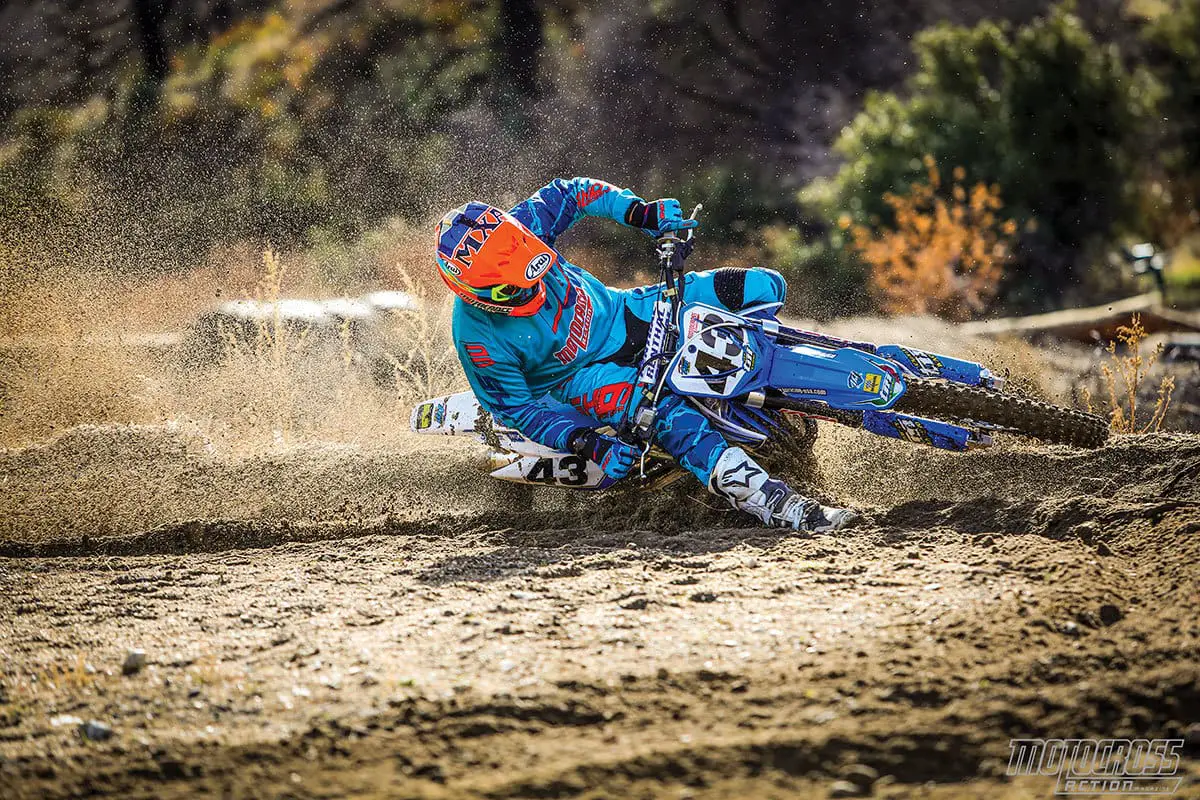
Q: FIRST AND FOREMOST, IS THE 2017 TM 300FI-MX BETTER THAN THE 2016 300FI-MX?
A: Yes. This is the best 300cc four-stroke motocross bike ever built. That is a bold statement, but Honda, Yamaha, Suzuki, Kawasaki, KTM and Husqvarna can’t touch the TM 300FI-MX in this displacement category. Why not? Because the 2017 TM 300FI-MX is the only 300cc four-stroke motocross bike built. It is a new addition to the 2017 TM line and wasn’t offered last year.
Q: WHY DID TM BUILD A 300 INSTEAD OF A 350?
A: TM is a very small motorcycle manufacturer. Total production of the 85cc, 144cc, 250cc and 300cc two-strokes added to the 250cc and 450cc four-strokes is around 1200 units a year. You don’t need a degree in plasma physics to divide the 1200 bikes by six engine designations to see that the median production run for each model is approximately 200 units—and that’s without breaking them into motocross, enduro and Supermoto models. Given that the two-stroke models, especially the MX 144, MX 250 and MX 300, are in greater demand than the mini-cycles and four-strokes, you could conclude that some models have a yearly output of less than 100 units. TM is a boutique builder; it builds small numbers of highly specialized machines and charges more to compensate for making fewer bikes.
What does this have to do with the 2017 TM 300FI-MX four-stroke? TM was looking for a mid-size four-stroke to slot between the 250FI-MX and the 450FI-MX. It had two paths it could follow: (1) TM could build a 350cc four-stroke that would be a small version of its 450. (2) TM could build a 300cc four-stroke that would be a big version of its 250. Given the success of its TM 300MX two-stroke and the existence of a 300cc World Enduro class, TM recognized that there was a ready-made market for a bolder, beefier, more powerful bike that maintained the traits of a traditional 250 four-stroke. The 300 route not only gave TM a unique machine, but it wouldn’t have to compete head to head on the showroom floor against the KTM and Husqvarna 350s.
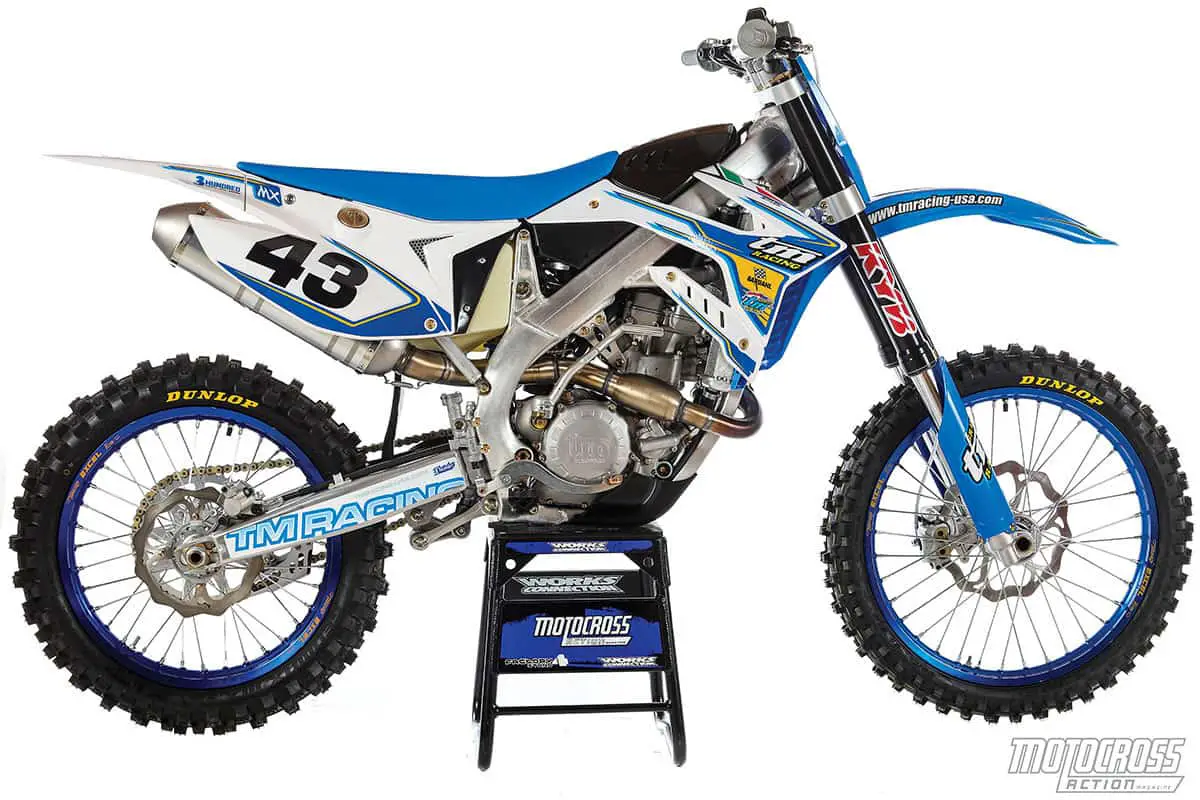
Q: WHAT’S INSIDE THE 2017 TM 300FI-MX ENGINE?
A: While the TM 250FI-MX and 300FI-MX engines look identical externally, they don’t share pistons, rings, connecting rods, cranks, cylinders, heads or transmissions. The only MX 250FI part that crosses over to the MX 300FI is the hydraulic clutch.
Engine. It’s not a lot cheaper to build a 300 engine from the 250’s case dimensions than it is to build a 350. All the same parts need to be changed in order to achieve the overall displacement, but upsizing to 300cc works better on the 250’s running gear than going to 350cc. Remember, TM’s goal was to build a more powerful 250, while KTM’s goal with the 350 was to build a less powerful 450. In essence, any shade-tree mechanic who puts a big-bore kit in his two-stroke or four-stroke understands what is involved. Now imagine that shade-tree mechanic had a casting plant that could build him all-new castings—that’s what TM has.
Bore and stroke. The TM 250FI-MX has a 77mm x 53.6mm bore and stroke. The 300FI-MX is enlarged to 81mm x 56.7mm for an overall displacement of 291.3cc
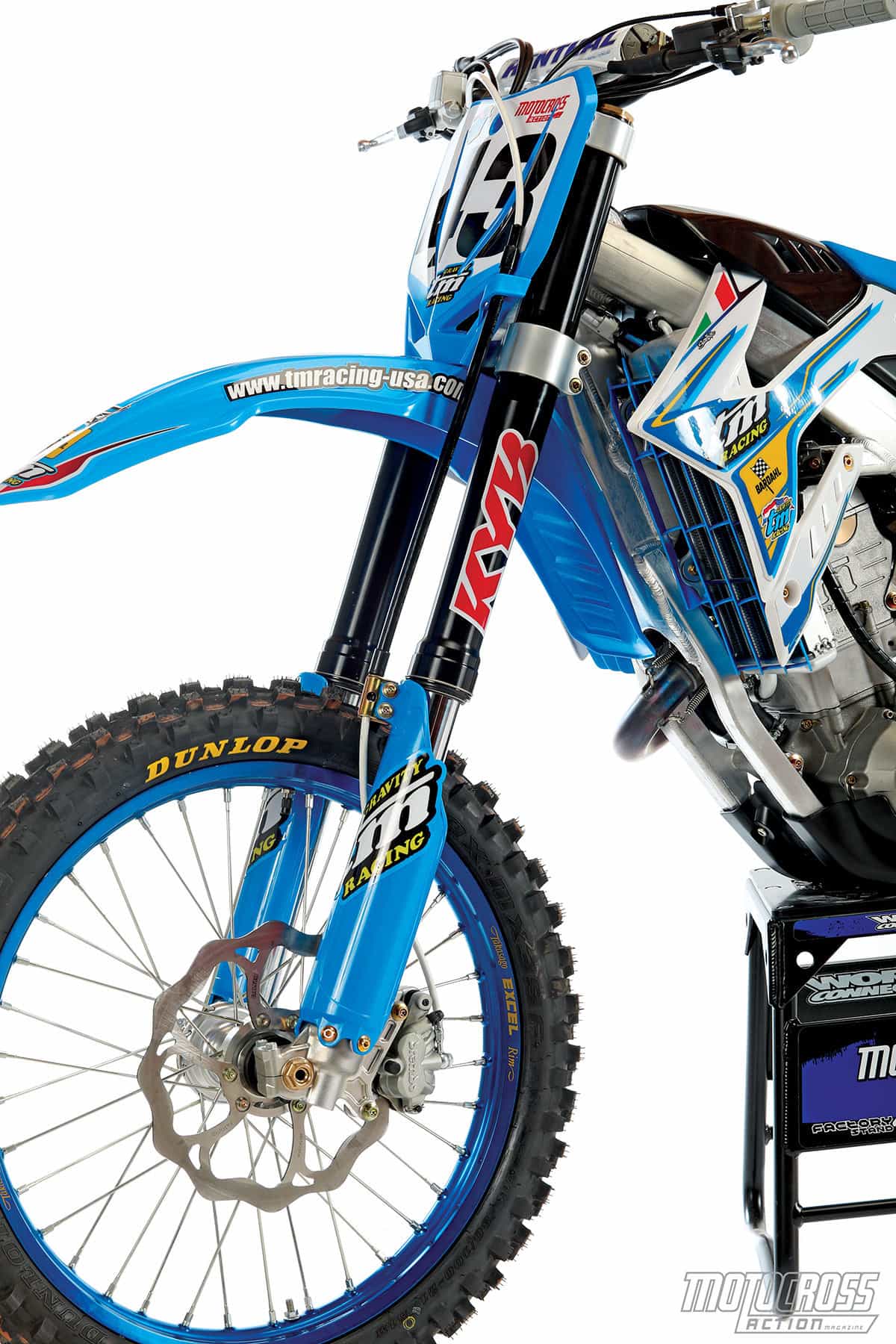
Maps. There are two maps accessible on the handlebar-mounted switch, and TM doesn’t use Kokusan black boxes like everyone else but uses local Italian supplier Microtec for its ignition mapping. Microtec builds TM black boxes with different curves for first, second and third gears, while fourth, fifth and sixth share a map. The MXA test riders always ran the TM 300FI-MX on Map 2.
Fuel injection. TM makes its own fuel-injection throttle body and mounts it behind the head at a 45-degree downward angle to maximize fuel misting and air velocity (the 2017 Honda CRF450 is a carbon copy of the TM design layout). The TM throttle body uses a 12-hole injector nozzle located on the bottom of the throttle body’s throat.
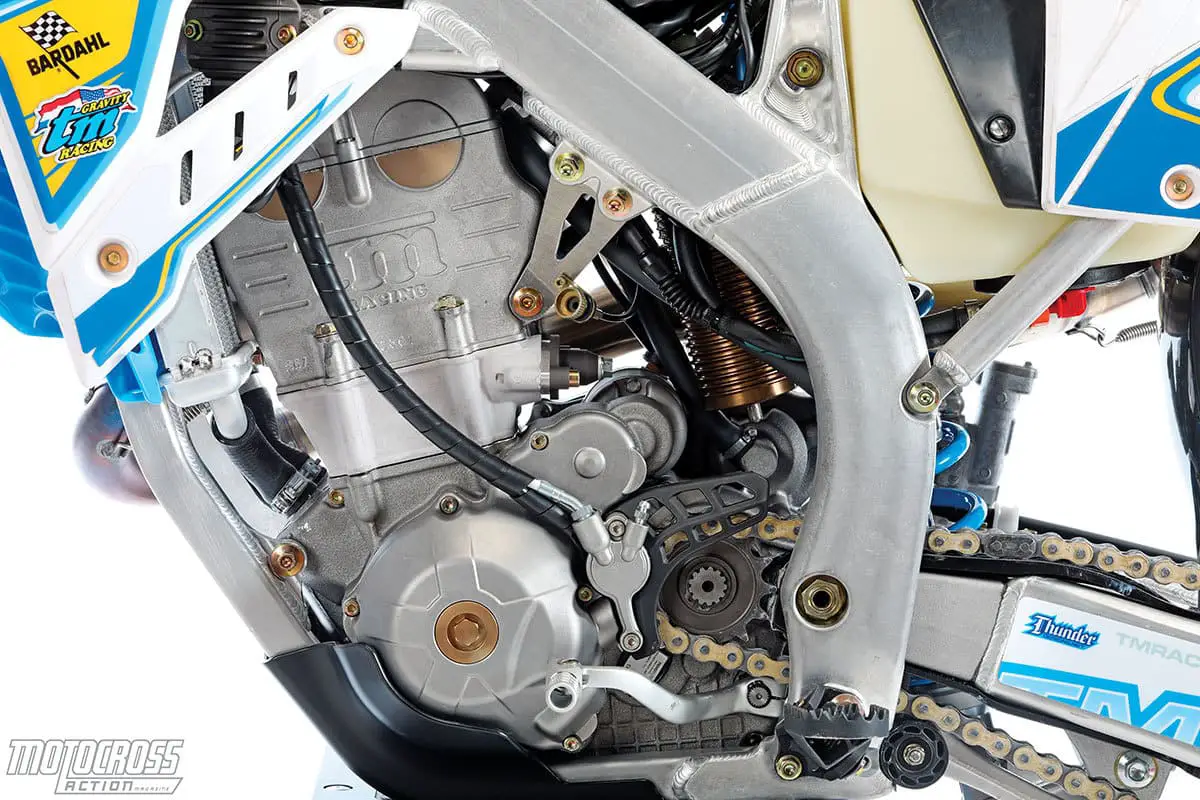
Clutch. As with the throttle body, TM makes its own hydraulic clutch slave unit, which it mates to a Brembo master cylinder. The six-spring clutch fits in a billet-machined, cush-drive, aluminum clutch basket that has been hard-coated for durability.
Gearbox. TM actually offers both five- and six-speed gearboxes on the 300FI-MX, but the American importer only brings in the six-speeder. Why? Because the five-speed and six-speed share the same first, second, third, fourth and fifth gears (and the sixth gear is tacked on for more top speed). For motocross use, you will never even know the TM 300FI-MX has a sixth gear, but it’s there if you want to go trail riding.
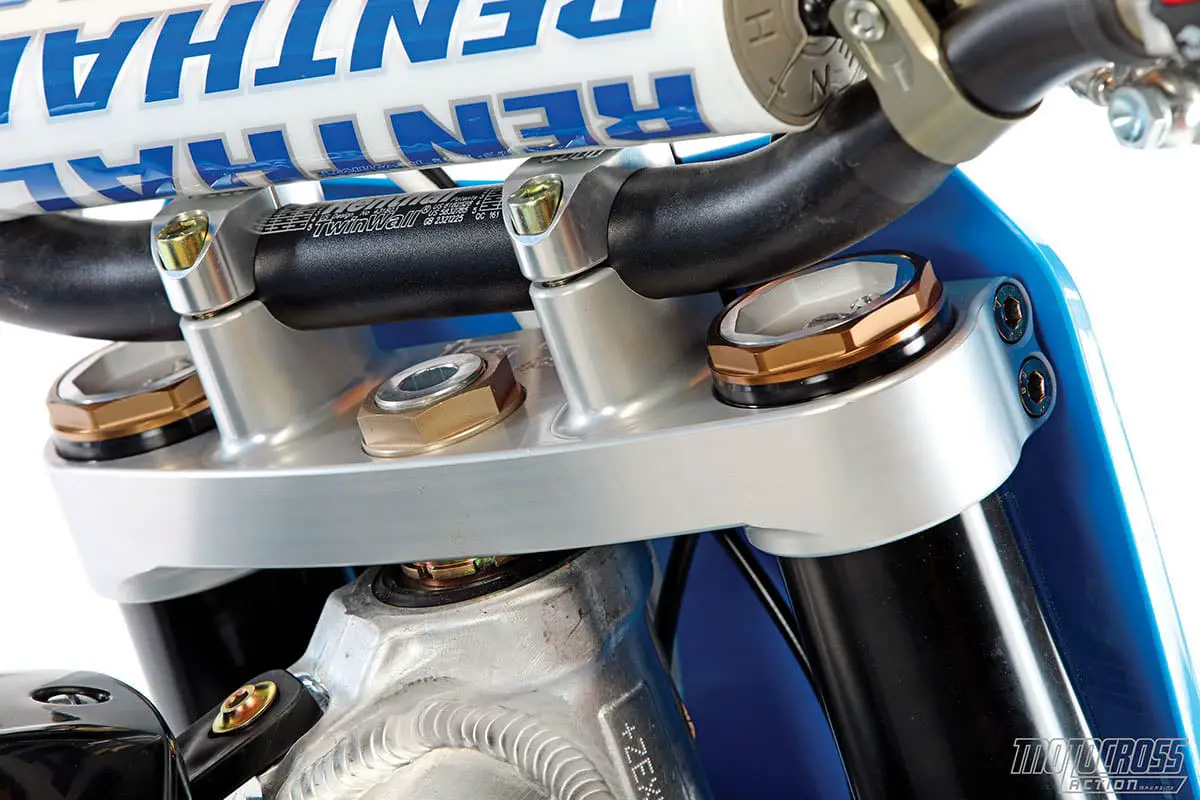
Q: WHAT PARTS DOES THE 300FI-MX SHARE WITH THE 250FI-MX?
A: The quick-and-easy answer would be everything else, with slightly different suspension setup and a few optional items. The frame, wheels, brakes, plastic, air filter, footpegs, rims, seat, handlebars, grips, fuel tank and levers are shared parts. There is a certain amount of savoir faire to the TM’s design. Here are some examples.

Fuel tank. The fuel is held low in the chassis, where the airbox on a normal bike would be and the airbox is where the gas tank should be. The swap makes sense, because the lightweight Twin Air filter is high on the chassis, while the 10 pounds of gas is centralized below the seat. The air filter can be accessed by removing one screw, while the gas cap is mounted on the right side of the bike as on a Formula 1 car.
Brakes. The front brake is a 270mm Galfer rotor powered by a Brembo master cylinder and caliper. The rear brake uses a Nissin master cylinder and caliper.
Suspension. The TM comes with Kayaba SSS forks, which are essentially the same forks that Yamaha uses. The valving is different. TM builds its own shock absorber. It uses a billet-machined and coated aluminum body with a piggyback reservoir that is moved inboard to make room for the central fuel tank. Consumers can order the 250FI-MX with either motocross or enduro valving, and an Ohlins TTX shock is also an option.
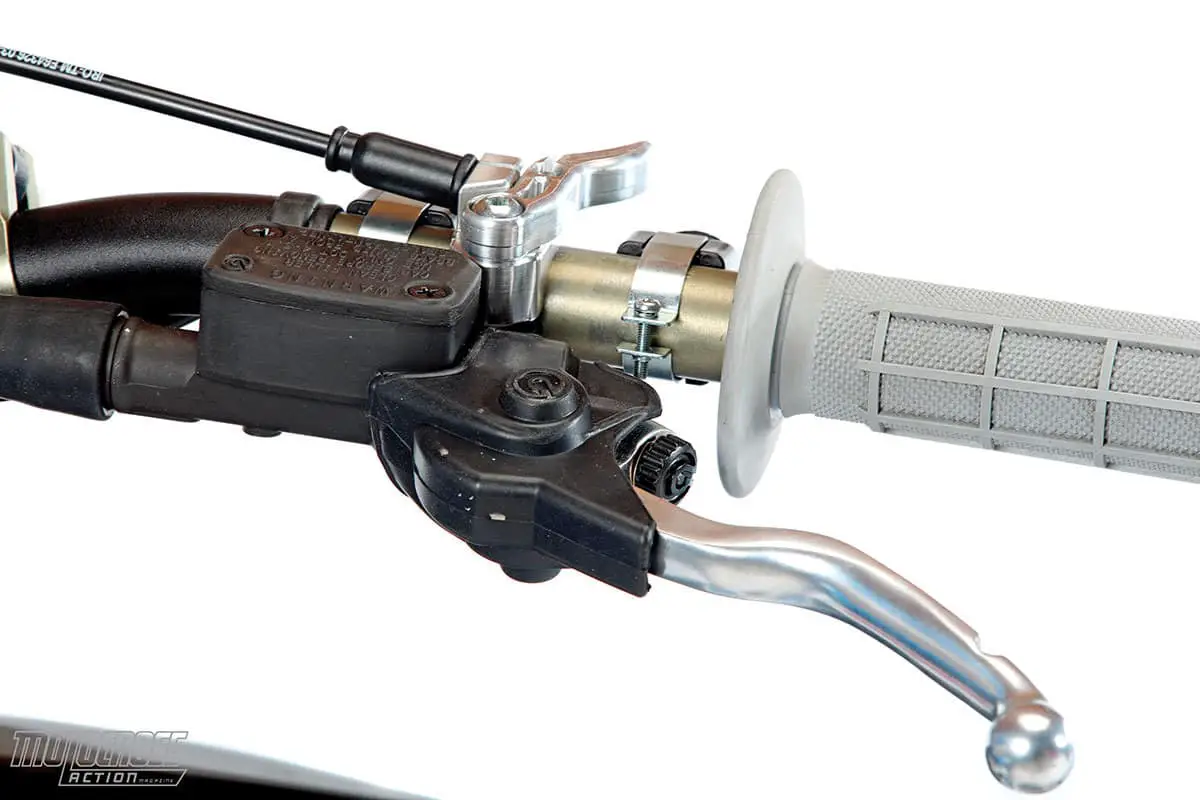
Handlebars. The stock Reikon handlebars have a high-rise bend, but TM offers an optional low bend. MXA test riders always choose the low bend.
Electric start. There is hardly anybody on the planet who couldn’t kick over a 300cc engine, but TM learned, as KTM did before them, that electric start is what consumers want. It is possible to get a kick-start version of the 300FI-MX, but the first shipment of bikes for the American market all come with the magic button.
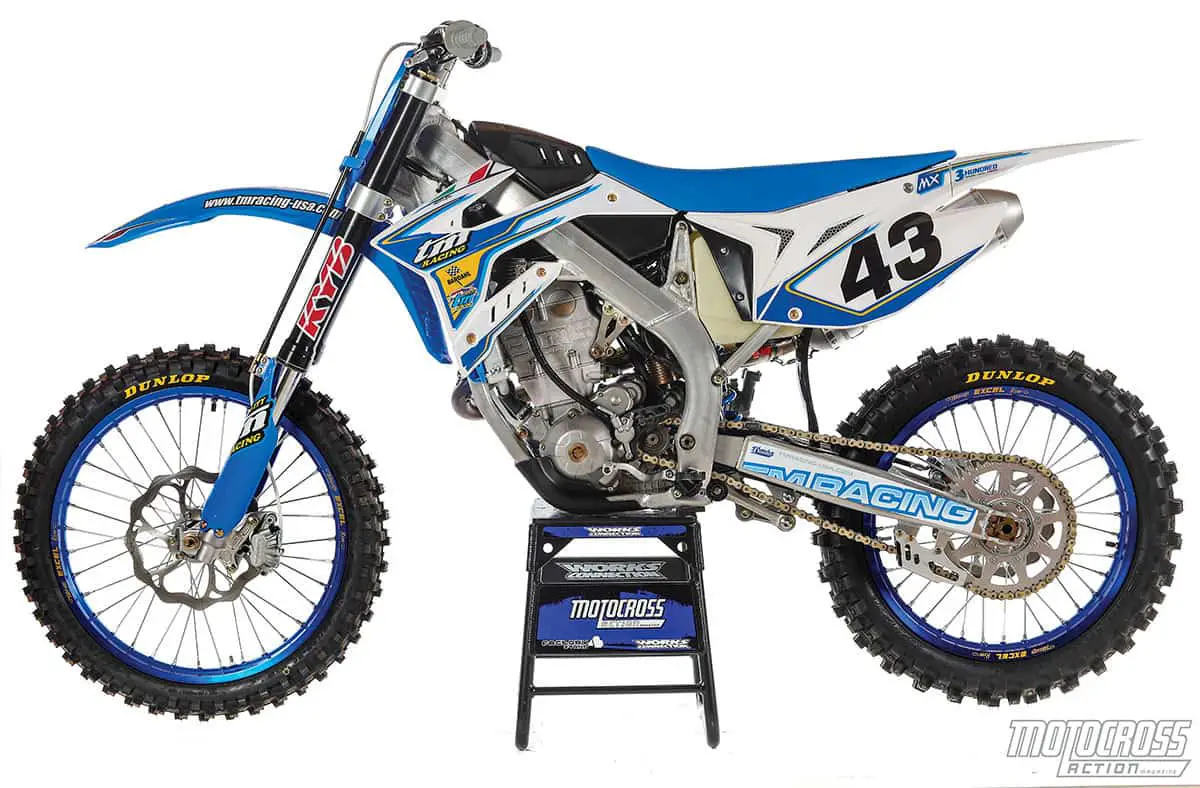
Q: HOW FAST IS THE 2017 TM 3000FI-MX?
A: To tell the truth, we expected the TM 300FI-MX to be fast because there is no replacement for displacement. The 50cc increase in displacement is good for four extra horses and a big increase in torque. We also expected the TM 300 to be chunkier on the bottom, peak early and sign off on the top end. We were in for a surprise. Instead of the big piston turning the TM 300 into a throaty low-to-mid-power monster, it maintained the sweet mid-and-up powerband of the TM 250, but with a lot more oomph.
For the test rider who raced the TM 300FI-MX, that meant that he could ride it with the same gusto as he would a 250cc four-stroke but get a bigger reward for doing things right. It didn’t take us long to realize that this is the working man’s works bike. With nothing more than 50cc more displacement, we were suddenly up in the horsepower range that the factory 250s were producing. That was impressive. Yes, it would be cheating to race it in the 250 class, which you could get away with by simply peeling the 300 sticker off the rear fender, but we don’t see this bike ending up in the hands of 17-year-old Loretta Lynn wannabes. Nope! This bike is destined for the Vet class or the professional practice-riding circuit, where its stout, aggressive, high-rpm, 300cc powerband can make mincemeat out of the run-of-the-mill 250 and shock the 450 guys into amazement.
For a lot of tastes, a 350 would have been a better choice, but it would still be a matter of personal preference. Compared head to head against the KTM 350SXF, the orange bike has a smoother low-end pick-up and offers effective hook-up in transition from low to mid. Where the 350SXF shines is at the upper fringes of the powerband where it just keeps pulling all the way to 13,500 rpm. By comparison, the TM 300FI-MX doesn’t have as much low-end and it isn’t as fluid in transition from low to mid, but, brother, when it hits in the midrange, you are riding a scalded cat. This is a gun-and-run powerband that most 250 Pros and Intermediates wish they had—and can’t get unless they end up on the Geico Honda, Star Yamaha or Pro Circuit Kawasaki team. In short, the KTM 350SXF is for the more calculating rider who wants to think about going before committing to it, while the TM 300 is for riders who don’t want to think, just go.
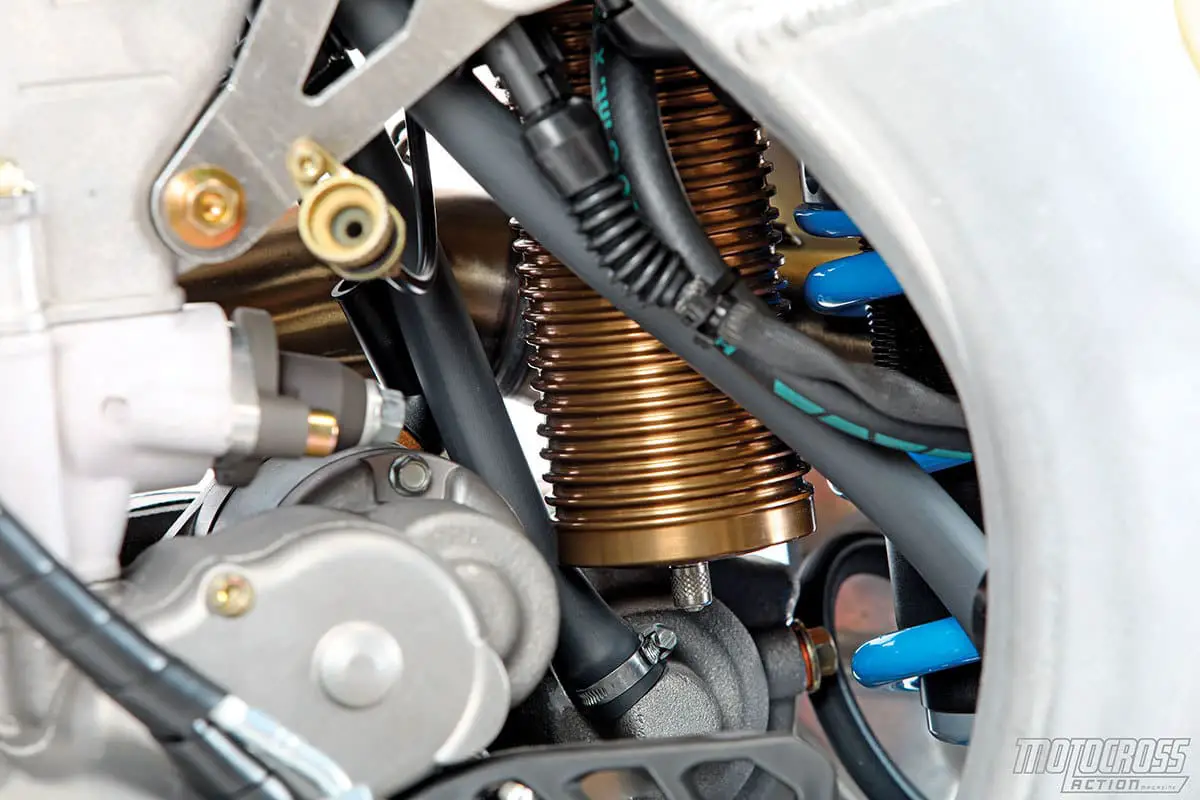
Q: HOW DOES THE 2017 TM 300FI-MX HANDLE?
A: We are always surprised that TMs handle so well. That is largely because many of the MXA test riders have experience with typical Italian tracks and Italian chassis. The Italians never embraced front-end turning; instead, they favored bikes that had to be backed into corners—tail-happy and throttle-pegged. And that is what makes the latest generation of TMs so appealing. The front end sticks to the ground like glue, and the TMs carve better than most Japanese bikes.
There are caveats to the TM’s handling. It is a very tall bike with stiff suspension. This, too, must be an Italian thing, because we spent most of our time trying to find ways to make the 300FI-MX feel smaller, lower, sleeker and flatter. In the end, we achieved a perfect balance. And compared to the suspension setup on the 2017 TM 250FI-MX that we tested a few months ago, the overall feel of the shock is vastly improved. The forks are still on the harsh side, but can be fixed with backyard cures.
Q: WHAT WE DID TO FIX THE 2017 TM 300FI-MX.
A: Here is what the MXA wrecking crew did—or wanted to do—to make the 300FI-MX a better racing machine. Not surprisingly, these are the same things we wanted done to the 250FI-MX that we tested in the October 2016 issue.
(1) Forks. We accept that Kayaba cannot valve TM’s forks to Yamaha’s spec (that would violate its fiduciary relationship with Yamaha); however, there is nothing stopping TM from coming up with plusher valving on its own. As it sits, the fork rides high, is overly stiff and feels as though it has cement in it. Our quick fix was to lower the oil height in the forks by 10cc.
(2) Shock. The 2017 TM 300FI-MX was great for 6-foot-tall test riders, but anyone below that had dangling feet. For smaller, lighter riders, we replaced the stock 48 N/m shock spring with a softer 46 N/m spring to get the bike to settle and the shock to move. A little less spring went a long way on the shock, but we also shortened the shock to get down a little closer to the ground.
(3) Gas cap. We love the mid-chassis fuel tank. You could tell how much fuel you had in the tank with a glance at the translucent plastic, but the gas cap is practically impossible to remove. We added an aftermarket TM cap because it had larger winglets, but it was still a struggle. In a pinch, we used pliers.
(4) Seat height. It’s skyscraper tall. We ran the sag at 108mm and slid the forks up in the clamps to bring the overall height down—not just so the bike would carve and turn better, but so our feet could touch the ground on the starting line.

Q: WHAT DID WE HATE?
A: The hate list:
(1) Airbox. We love the front-mounted airbox a lot more than the Yamaha one, but the large vents in the airbox cover allow dirt in and noise out.
(2) Setup. This bike could be so good if the factory lowered it, softened it and flattened it.
(3) Rear sprocket bolts. There are nine bolts on the rear sprocket. We accidentally lost three the first time we changed the rear sprocket.
(4) Gas cap. We loved the side-panel-mounted gas cap but kept a pair of pliers handy.
(5) Decompression braking. Just like the TM 450FI-MX and 250FI-MX that we tested last year, the 300FI-MX has old-school engine braking.
(6) Gearing. Adding a tooth to the 14/50 gearing won’t help. We went to 13/51, which is 4.5 teeth lower.
(7) Price. $10,595.

Q: WHAT DID WE LIKE?
A: The like list:
(1) Electric starting. TM’s kick-start models require special techniques to master. The electric-start version can be mastered by an orangutan.
(2) Brakes. Awesome power and superb modulation. Just imagine KTM brakes but with an oversized 270mm rotor.
(3) Wheels. Blue Takasago Excel rims are laced to very sleek, polished spool hubs.
(4) Map switches. There are two maps available on the handlebars. We ran Map 2.
(5) Shifting. Good, but you need to be firm with the lever. Plus, the clutch can take abuse.
(6) Handling. Even with its awkward height, the TM 300FI-MX can turn on a dime.
(7) Gas tank. Even though we had issues getting the gas cap off, we loved showing its weird location to people.
(8) Airbox. Somewhere between Yamaha’s plumber’s nightmare of an airbox and TM’s simplistic birdcage design, there is a workable solution.

Q: WHAT DO WE REALLY THINK?
A: There is no doubt that TM put more care and thought into the setup of its latest machine. The 2017 TM 300FI-MX shows signs of progress in the suspension department, and the mid-size engine is a blast to race. Kudos to TM.
MXA’S 2017 TM 300FI-MX SETUP SPECS
This is how we set up our TM 300FI-MX for racing. We offer it as a guide to help you find your own sweet spot.
KAYABA FORK SETTINGS
Given that these forks are Kayaba SSS forks, there is no reason they shouldn’t perform well. But, as they roll out of the factory, they are plush for the first half of the stroke and then ramp up quickly. For hard-core racing, we ran this setup on the 2017 300FI-MX (the stock settings are in parentheses):
Spring rate: 0.46 N/m
Compression: 17 clicks out (12 clicks out)
Rebound: 12 clicks out (17 clicks out)
Fork-leg height: 5mm up
Notes: We lowered the oil height by 10cc to get a plusher feel. We think that anyone under 150 pounds would need softer springs.
TM SHOCK SETTINGS
We focused on the high-speed compression to encourage the shock to drop into its travel quicker. We also sped up the rebound‚ not just to free up the shock, but to take advantage of the crossover effect on the low-speed compression valve stack. This was the best TM shock we have ever tested. For hardcore racing, we ran this setup on the 2017 300FI-MX (the stock settings are in parentheses):
Spring rate: 46 N/m (48 N/m)
Hi-compression: 12 clicks out
Lo-compression: 8 clicks out
Rebound: 10 clicks out (15 clicks out)
Race sag: 108mm
Notes: We set the sag at 100mm, but began lowering it as part of a two-prong approach to getting a more supple feel—and to get the chassis closer to the ground. The U.S. TM importer will work with you to get the shock valved to your height and weight. This is important, because very few suspension shops have ever seen a TM factory shock, although internally it is fairly standard. For more help, go to www.tmracing-usa.com or (951) 850-6021.







Comments are closed.